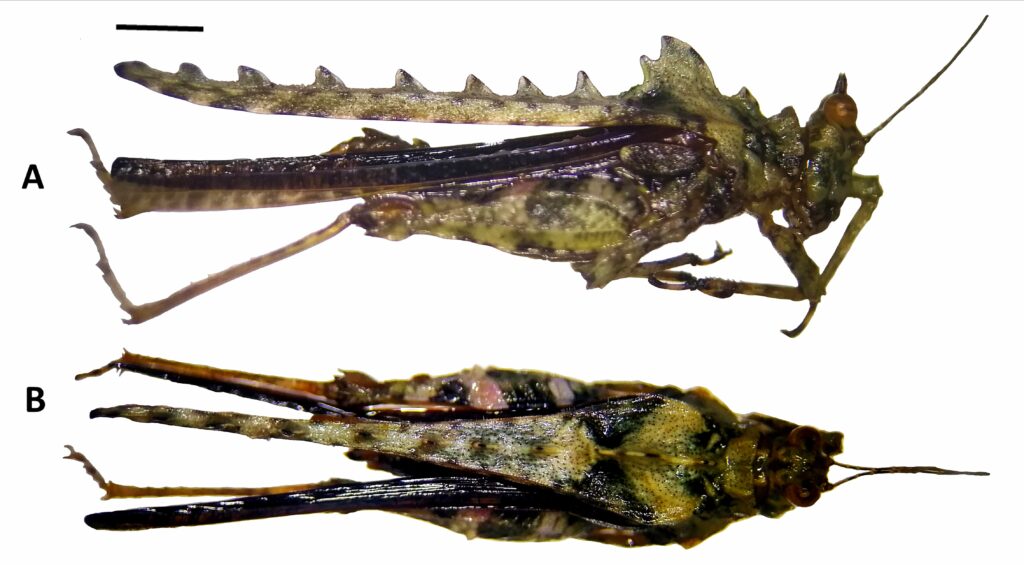
A group of researchers led by Academician Dr. Victor B. Amoroso and Dr. Alma B. Mohagan from the Center for Biodiversity Research and Extension in Mindanao (CEBREM) discovered two new species of insects in the key biodiversity areas of Mindanao, specifically in Mt. Hamiguitan Wildlife Sanctuary (Davao Oriental) and Mt. Malambo (Marilog District) through the research programs funded by the Department of Science and Technology – Grant-in-Aid (DOST-GIA) and the Commission on Higher Education Discovery-Applied Research and Extension for Trans/Inter-disciplinary Opportunities (CHED DARE TO), respectively.
The first newly discovered species is a beetle in the insect order Coleoptera, scientifically called Metapocyrtus bronsi (Patano & Yap, 2020), found in Mt. Hamiguitan Wildlife Sanctuary. It was named after “bronsi” a Mandaya word that means bronze, a prominent color found on the scale markings of the beetle’s integument. This discovery was published in the Philippine Journal of Systematic Biology in 2020.
The second new species, Tegotettix derijei (Patano et al., 2021), found in the Marilog Forest Reserve, Davao City, was published in the Zootaxa in the early months of 2021. T. derijei (Orthoptera: Tetrigidae) is considered a peculiar new pygmy grasshopper species in Mindanao with its horned and spiky features.
“In the Philippines, we have more than 100 species of pygmy grasshoppers, and we only have two known species endemic in the Philippines for that genus. This discovery adds up to that species under this genus,” Mr. Patano, the first author of the paper published in Zootaxa, whose interest is also in Tetrigidae-Pygmy Grasshoppers, said in an interview.
This new species was named after the CMU President, Dr. Jesus Antonio G. Derije, to honor his valuable support to several kinds of research conducted by CEBREM and the entire university.
“President Derije also visited us in Marilog forest while we were doing the sampling,” Dr. Mohagan, also the Head of the University Museum, said in a separate interview.
“The new species that we have discovered are outputs of the two ongoing researches under the research programs of NAST Academician and Professor Emeritus Dr. Victor B. Amoroso,” she added.
Dr. Mohagan also shared that conducting this research intends to provide data that support the conservation of the mountain ecosystems. She further said that: “Discovering new species is an expression of our love for the country as part of the national heritage.”
The results generated by the CMU researchers were used to inscribe Mt. Hamiguitan as UNESCO World Heritage Site in 2014.
 Central Mindanao University Academic Paradise of the South
Central Mindanao University Academic Paradise of the South







